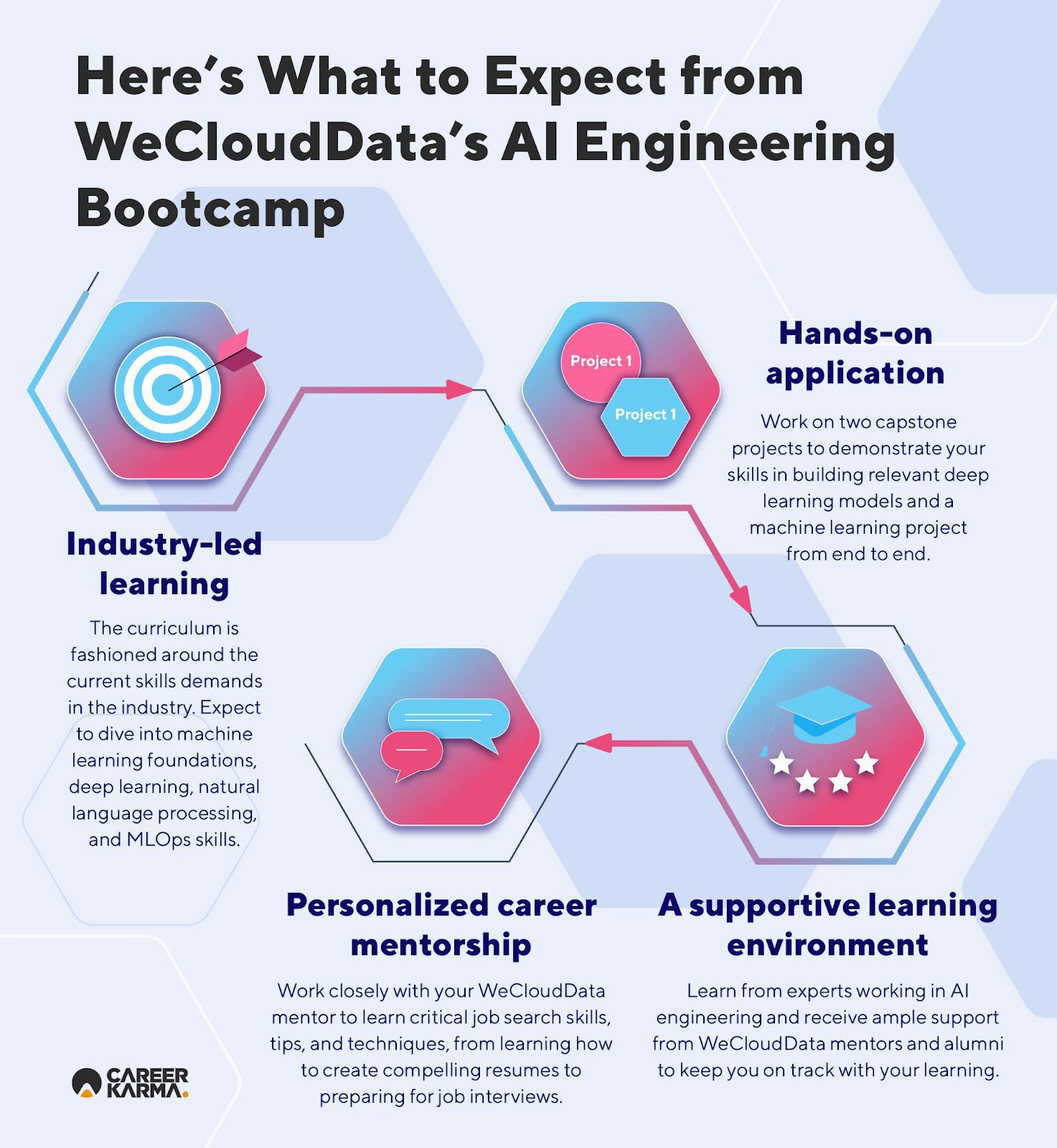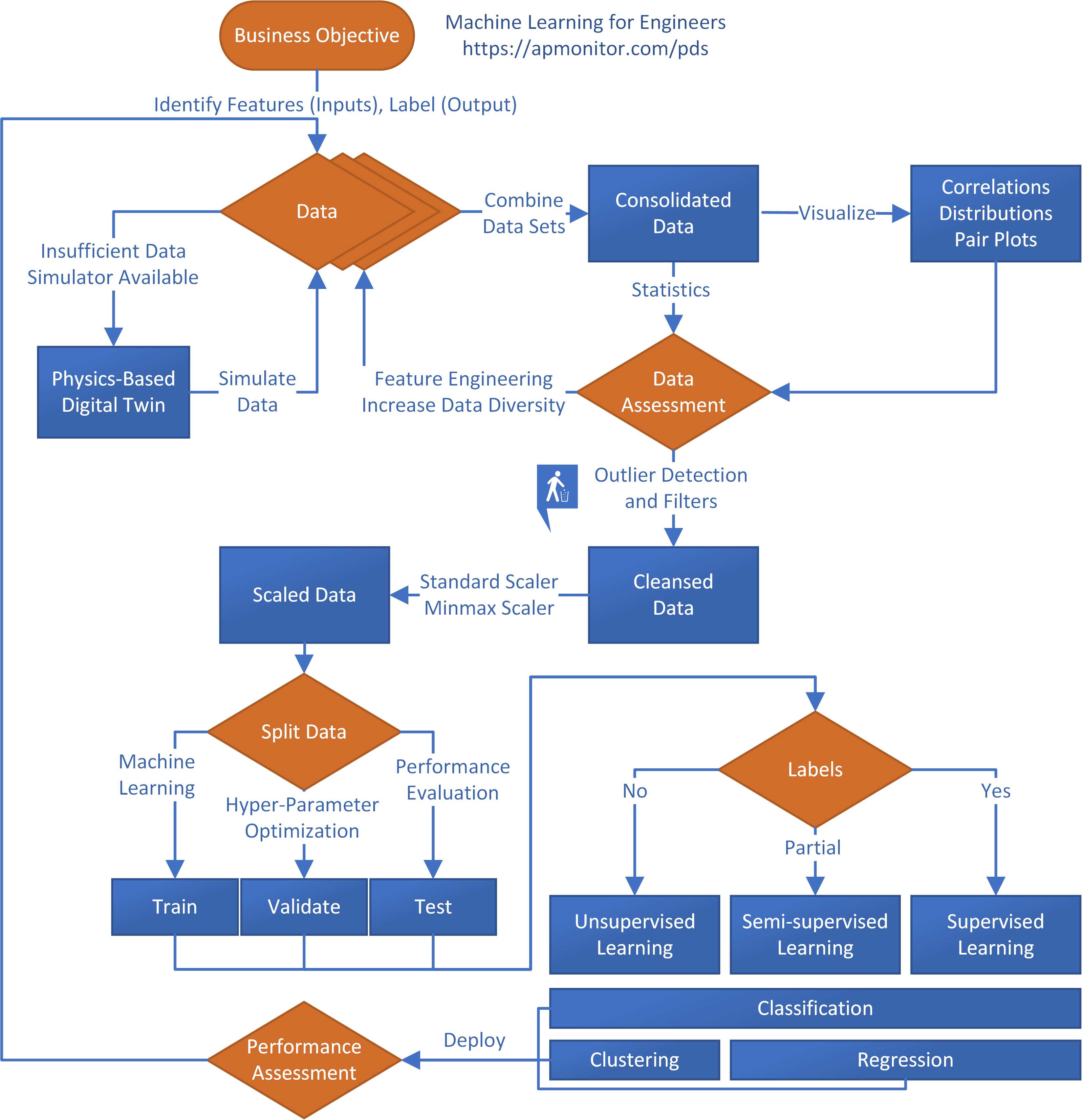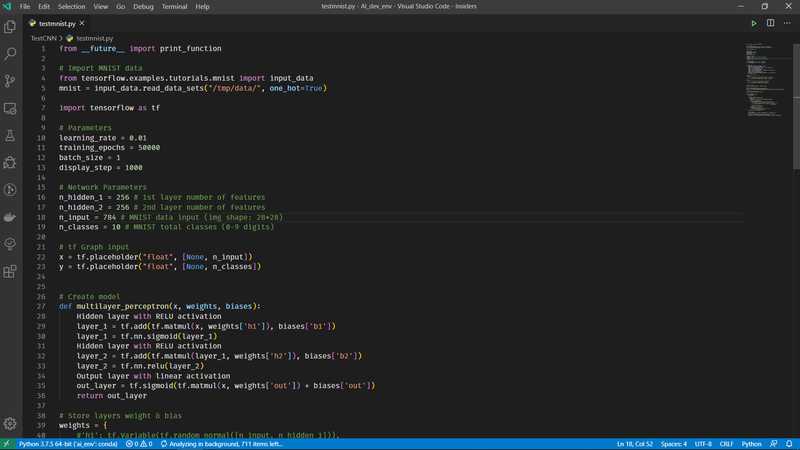All Categories
Featured
Table of Contents
- – The smart Trick of Top Machine Learning Course...
- – Fascination About What Do I Need To Learn Abou...
- – Excitement About How I Went From Software Dev...
- – The Buzz on What Is A Machine Learning Engine...
- – The 🔥 Machine Learning Engineer Course For ...
- – 8 Easy Facts About New Course: Genai For Sof...
You possibly understand Santiago from his Twitter. On Twitter, every day, he shares a whole lot of useful points concerning equipment discovering. Alexey: Before we go right into our primary topic of relocating from software engineering to device learning, perhaps we can begin with your history.
I went to university, obtained a computer system scientific research level, and I started building software. Back then, I had no concept about maker discovering.
I understand you've been making use of the term "transitioning from software program design to machine knowing". I like the term "contributing to my ability the artificial intelligence abilities" extra because I think if you're a software program engineer, you are currently offering a great deal of worth. By incorporating device understanding now, you're boosting the effect that you can have on the market.
That's what I would certainly do. Alexey: This comes back to one of your tweets or perhaps it was from your training course when you compare 2 techniques to learning. One method is the problem based method, which you just discussed. You discover a trouble. In this instance, it was some issue from Kaggle regarding this Titanic dataset, and you just learn just how to fix this problem utilizing a details device, like decision trees from SciKit Learn.
The smart Trick of Top Machine Learning Courses Online That Nobody is Discussing
You initially learn mathematics, or direct algebra, calculus. When you know the mathematics, you go to device learning concept and you learn the theory.
If I have an electric outlet below that I need changing, I do not wish to most likely to university, invest 4 years recognizing the mathematics behind electrical energy and the physics and all of that, just to transform an electrical outlet. I would certainly rather begin with the outlet and discover a YouTube video that assists me go with the issue.
Santiago: I really like the concept of beginning with an issue, attempting to throw out what I understand up to that trouble and recognize why it does not work. Order the tools that I need to solve that problem and begin excavating much deeper and much deeper and much deeper from that point on.
That's what I typically suggest. Alexey: Perhaps we can talk a bit regarding finding out sources. You discussed in Kaggle there is an intro tutorial, where you can obtain and learn exactly how to choose trees. At the beginning, before we began this meeting, you mentioned a number of publications also.
The only requirement for that course is that you know a little bit of Python. If you go to my account, the tweet that's going to be on the top, the one that states "pinned tweet".
Fascination About What Do I Need To Learn About Ai And Machine Learning As ...

Even if you're not a designer, you can start with Python and work your means to even more artificial intelligence. This roadmap is concentrated on Coursera, which is a platform that I truly, really like. You can examine every one of the courses totally free or you can pay for the Coursera registration to get certifications if you wish to.
So that's what I would certainly do. Alexey: This returns to one of your tweets or perhaps it was from your program when you contrast two methods to knowing. One approach is the problem based strategy, which you just discussed. You discover an issue. In this instance, it was some problem from Kaggle regarding this Titanic dataset, and you just discover how to solve this problem utilizing a certain tool, like choice trees from SciKit Learn.

You initially learn math, or straight algebra, calculus. When you recognize the mathematics, you go to device discovering theory and you learn the theory.
If I have an electric outlet below that I need replacing, I do not wish to most likely to college, invest four years understanding the math behind power and the physics and all of that, just to change an outlet. I would rather begin with the outlet and locate a YouTube video that aids me experience the trouble.
Poor example. However you understand, right? (27:22) Santiago: I really like the idea of beginning with a trouble, trying to throw away what I know up to that issue and recognize why it does not function. Then get the devices that I require to address that issue and begin excavating much deeper and much deeper and much deeper from that point on.
To ensure that's what I normally advise. Alexey: Maybe we can speak a bit concerning learning resources. You discussed in Kaggle there is an intro tutorial, where you can get and discover just how to choose trees. At the beginning, before we started this interview, you pointed out a number of publications too.
Excitement About How I Went From Software Development To Machine ...
The only demand for that program is that you understand a little of Python. If you're a designer, that's a fantastic starting point. (38:48) Santiago: If you're not a designer, then I do have a pin on my Twitter account. If you go to my profile, the tweet that's mosting likely to get on the top, the one that says "pinned tweet".
Also if you're not a designer, you can start with Python and work your way to even more artificial intelligence. This roadmap is concentrated on Coursera, which is a system that I actually, truly like. You can investigate all of the programs completely free or you can spend for the Coursera subscription to get certificates if you intend to.
The Buzz on What Is A Machine Learning Engineer (Ml Engineer)?
That's what I would certainly do. Alexey: This returns to among your tweets or maybe it was from your training course when you compare two techniques to knowing. One technique is the trouble based approach, which you simply discussed. You locate an issue. In this case, it was some issue from Kaggle about this Titanic dataset, and you just find out how to address this issue utilizing a specific tool, like choice trees from SciKit Learn.

You initially discover mathematics, or linear algebra, calculus. When you understand the math, you go to equipment learning theory and you learn the concept.
If I have an electric outlet right here that I need replacing, I don't intend to most likely to college, invest 4 years recognizing the mathematics behind electricity and the physics and all of that, just to transform an outlet. I prefer to start with the outlet and locate a YouTube video clip that helps me undergo the issue.
Negative example. Yet you obtain the concept, right? (27:22) Santiago: I truly like the idea of starting with a trouble, trying to toss out what I know as much as that issue and recognize why it doesn't function. Order the devices that I require to address that issue and begin digging much deeper and deeper and much deeper from that factor on.
Alexey: Perhaps we can speak a little bit about finding out resources. You stated in Kaggle there is an intro tutorial, where you can get and learn exactly how to make decision trees.
The 🔥 Machine Learning Engineer Course For 2023 - Learn ... PDFs
The only requirement for that program is that you understand a little of Python. If you're a programmer, that's a great base. (38:48) Santiago: If you're not a developer, after that I do have a pin on my Twitter account. If you go to my profile, the tweet that's going to be on the top, the one that says "pinned tweet".
Also if you're not a developer, you can begin with Python and function your method to even more artificial intelligence. This roadmap is focused on Coursera, which is a platform that I really, really like. You can audit every one of the courses for totally free or you can pay for the Coursera membership to obtain certifications if you intend to.
To make sure that's what I would certainly do. Alexey: This comes back to one of your tweets or possibly it was from your program when you contrast 2 techniques to discovering. One approach is the problem based approach, which you just spoke about. You discover an issue. In this case, it was some issue from Kaggle regarding this Titanic dataset, and you simply learn how to fix this trouble using a specific tool, like decision trees from SciKit Learn.
You initially find out mathematics, or linear algebra, calculus. When you understand the math, you go to machine learning theory and you discover the concept.
8 Easy Facts About New Course: Genai For Software Developers Shown
If I have an electric outlet right here that I need changing, I do not wish to most likely to college, spend 4 years comprehending the mathematics behind power and the physics and all of that, just to transform an electrical outlet. I prefer to start with the outlet and locate a YouTube video clip that assists me undergo the problem.
Bad example. But you get the concept, right? (27:22) Santiago: I really like the concept of beginning with an issue, trying to throw out what I know up to that trouble and comprehend why it does not function. Get hold of the devices that I need to resolve that problem and begin digging deeper and much deeper and deeper from that factor on.

Alexey: Perhaps we can speak a bit regarding learning sources. You pointed out in Kaggle there is an introduction tutorial, where you can get and learn how to make choice trees.
The only requirement for that training course is that you know a little bit of Python. If you go to my profile, the tweet that's going to be on the top, the one that states "pinned tweet".
Also if you're not a designer, you can begin with Python and function your way to even more maker knowing. This roadmap is concentrated on Coursera, which is a system that I actually, really like. You can investigate all of the courses completely free or you can spend for the Coursera subscription to obtain certificates if you wish to.
Table of Contents
- – The smart Trick of Top Machine Learning Course...
- – Fascination About What Do I Need To Learn Abou...
- – Excitement About How I Went From Software Dev...
- – The Buzz on What Is A Machine Learning Engine...
- – The 🔥 Machine Learning Engineer Course For ...
- – 8 Easy Facts About New Course: Genai For Sof...
Latest Posts
How To Answer Probability Questions In Machine Learning Interviews
Software Engineering Interview Tips From Hiring Managers
Top 10 System Design Interview Questions Asked At Faang
More
Latest Posts
How To Answer Probability Questions In Machine Learning Interviews
Software Engineering Interview Tips From Hiring Managers
Top 10 System Design Interview Questions Asked At Faang